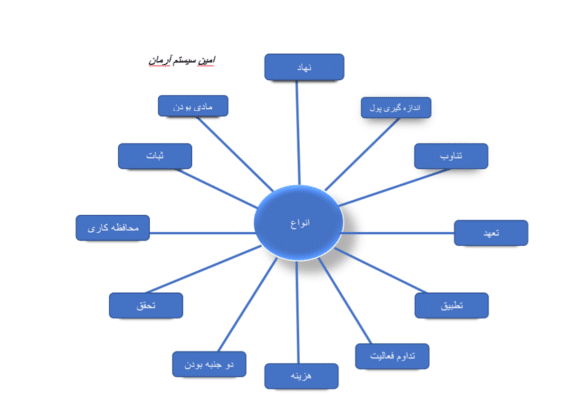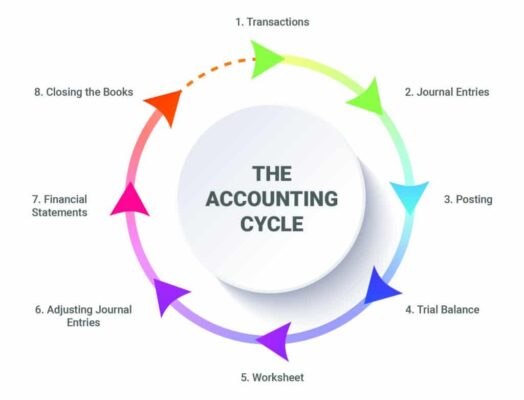?
استهلاک در حسابداری (depreciation in accounting): اصطلاح استهلاک در حسابداری به عنوان کاهش بهای تمام شده و ثبت یک دارایی ثابت به صورت سیستماتیک تا زمانیکه ارزش دارایی صفر شود میباشد.
و یا به عبارت دیگر استهلاک به طور سیستماتیک هزینه یک دارایی را در صورت سود و زیان در طول عمر دارایی یا طول دوره مالی یک شرکت از ترازنامه به بهای تمام شده استهلاک منتقل می کند.
روش های استهلاک:
استهلاک در حسابداری دارای 5 روش میباشد:
روش خط مستقیم (straight line method)
کاهش تراز نزولی (declining balance)
دو برابر کاهش تراز نزولی (double declining balance)
مجموع ارقام سال (sum of the year digit)
واحد های تولیدی (unit of production)
1:روش خط مستقیم:
این روش یکی از آسان ترین و ساده ترین روش های استهلاک در حسابداری است که در این روش محاسبه استهلاک با کسر ارزش باقیمانده از بهای تمام شده دارایی انجام میشود. پس مبلغ بر تعداد سال های که دارایی استفاده شده تقسیم میشود.
فرمول استهلاک خط مستقیم
مقدار باقیمانده ـــ هزینه یک دارایی
عمر مفید یک دارایی
2:روش کاهش تراز نزولی:
این یک سیستم استهلاک شتاب یافته ، برای ثبت هزینه های استهلاک بیشتر در طول سال های اولیه دارایی و ثبت هزینه های استهلاک کمتر در طول سال های بعد دارایی است.
فرمول کاهش تراز نزولی
استهلاک جمع شده ـــ هزینه یک دارایی
عمر مفید یک دارایی
3:روش دو برابر کاهش تراز نزولی
روش تراز مضاعف نزولی یک روش استهلاک شتابی است که با سرعت بیشتری به عنوان هزینه به حساب می آید
فرمول دو برابر کاهش تراز نزولی
استهلاک جمع شده ــــ هزینه یک دارایی x2
عمر مفید یک دارایی
4:روش مجموع ارقام سال :
برای تسریع در شناسایی استهلاک از روش مجموع ارقام سال ها استفاده میشود. انجام این روش به این معنی است که بیشتر استهلاک یک دارایی در چند سال اول عمر مفید آن شناسایی شود
فرمول مجموعه ارقام سال
عمر مفید باقیمانده x پایه استهلاک=هزینه استهلاک
مجموع ارقام سال
5:روش واحد های تولیدی:
این روش یک روش برای محاسبه استهلاک ارزش دارایی در طول زمان آن است.
فرمول واحد های تولیدی
واحد تولید شده X مقدار باقیمانده ـــ هزینه دارایی
تولید در طول عمر
استهلاک در حسابداری دارای سه بخش مختلف میباشد:
1:استهلاک فیزیکی :
دارایی ها در طول یک چرخه عمر معمولی مستهلک میشوند و جدول های استهلاک فیزیکی سعی میکنند این کاهش ارزش را در طول چرخه ای از عمر آن محاسبه کنند
2:منسوخ شدن عملکرد:
عبارت است از کاهش سودمندی به دلیل یک طراحی قدیمی که به راحتی قابل تغییر یا به روز رسانی نیست
3:منسوخ شدن اقتصاد:
این منسوخ شدن اقتصادی در نتیجه عوامل بیرونی رخ می دهد که روی توانایی یک شرکت برای رقیب های تجاری و رشد آن در بازار تاثیر میگذارد.
Depreciation
In accounting terms, deprecation is the reduction of cost and the recording of a fixed asset systematically until the value of assets is become to zero.
In other words, depreciation systematically transfers the cost of an asset from the balance sheet to the cost of depreciation in the event of a profit or loss over the life of an asset or the financial period of a company.
depreciation ways:
1: straight-line method:
This method is one of the easiest and simplest depreciation methods in which depreciation is calculated by deducting the residual value from the cost of life asset. so the number of years assets used.
The formula of the straight-line method:
Formula:
straight-line method
2: declining balance method:
it is an accelerated depreciation system to record higher depreciation costs during the early years of the asset and to record lower depreciation costs during the later years of the asset.
Formula:
declining-balance method
3:double declining balance method:
The declining double balance method is an accelerated depreciation method that is considered as a faster cost
Formula:
double declining balance method
4: sum of the digit year methods:
the accelerate or identification of depreciation, the method of sum digit year is used doing someone’s identifying most of the depreciation of an asset in the first few years of its useful life.
Formula:
sum of the digit year methods
5: unit production method:
This method is a method for calculating the deprecation of an asset over its time.
Formula:
unit production method
Depreciation has three different types:
1: physical deprecation:
Assets are depreciated over a typical life cycle, and physical depreciation tables try to calculate this depreciation over a life cycle.
2: functional obsolescence:
It is a reduction in usefulness due to an old design that cannot be easily changed or updated.
3: economy obsolescence:
This economic obsolescence occurs as a result of external factors that affect a company’s ability to can compete with competitors and its growth in the market.
الاستهلاک فی المحاسبة
من الناحیة المحاسبیة، الاستهلاک هو تخفیض التکلفة وتسجیل الأصول الثابتة بشکل منهجی حتى تصبح قیمة الأصل صفرًا.
بمعنى آخر، یحول الاستهلاک بشکل منهجی تکلفة الأصل فی شکل ربح وخسارة على مدى عمر الأصل أو العمر المالی للشرکة من المیزانیة العمومیة إلى تکلفة الاستهلاک.
طرق الإهلاک:
هناک 5 طرق للإهلاک:
1: طریقة الخط المستقیم
2: إنقاص المیزان النزولی
3: تخفیض مزدوج للرصید الهابط
4: إجمالی أرقام العام
5: وحدات الإنتاج
1: طریقة الخط المستقیم:
هذه الطریقة هی واحدة من أسهل وأبسط طرق الإهلاک التی یتم فیها حساب الإهلاک عن طریق خصم القیمة المتبقیة من تکلفة الأصل. لذلک یتم تقسیم المبلغ على عدد سنوات استخدام الأصل.
2: انخفاض فی التوازن التنازلی:
إنه نظام إهلاک متسارع ، لتسجیل تکالیف إهلاک أعلى خلال السنوات الأولى للأصل ولتسجیل تکالیف إهلاک أقل خلال السنوات الأخیرة للأصل.
3: تخفیض مزدوج للمیزان الهابط
طریقة الرصید المزدوج التنازلی هی طریقة إهلاک متسارعة تعتبر تکلفة أسرع.
4: إجمالی أرقام العام:
لتسریع تحدید الاستهلاک ، یتم استخدام طریقة مجموع السنوات. القیام بذلک یعنی تحدید معظم إهلاک الأصل فی السنوات القلیلة الأولى من عمره الإنتاجی
5: وحدات الإنتاج:
هذه الطریقة هی طریقة لحساب استهلاک الأصل على مدار وقته.
یتکون الاستهلاک من ثلاثة أجزاء مختلفة
1: الاستهلاک المادی:
یتم استهلاک الأصول على مدار دورة حیاة نموذجیة ، وتحاول جداول الإهلاک المادی حساب هذا الاستهلاک على مدار دورة حیاة.
2: التقادم الوظیفی:
إنه تقلیل فی الفائدة بسبب تصمیم قدیم لا یمکن تغییره أو تحدیثه بسهولة.
3: تقادم الاقتصاد:
یحدث هذا التقادم الاقتصادی نتیجة عوامل خارجیة تؤثر على قدرة الشرکة على التنافس مع المنافسین ونموها فی السوق.
منبع: amisa.co
?











